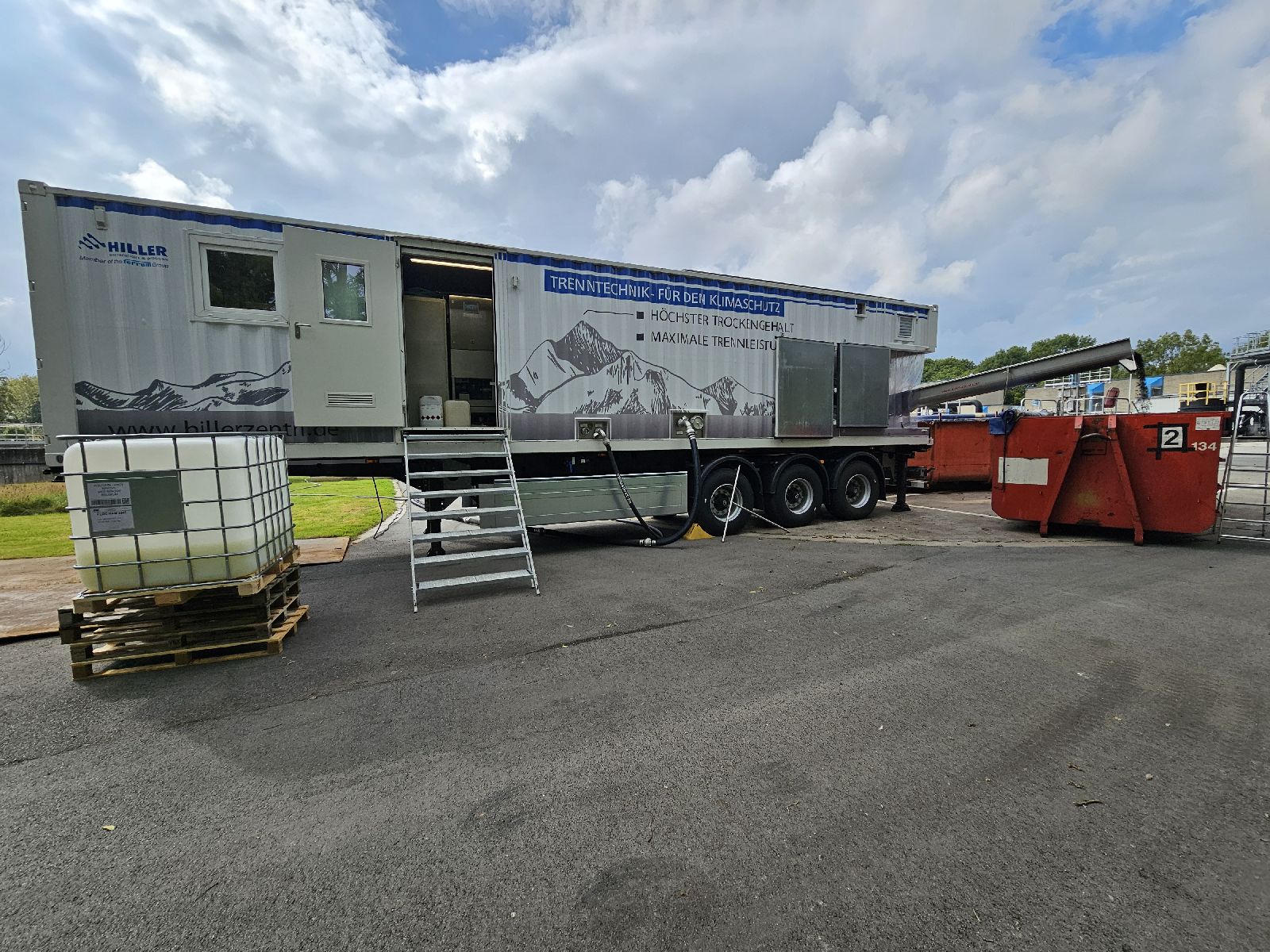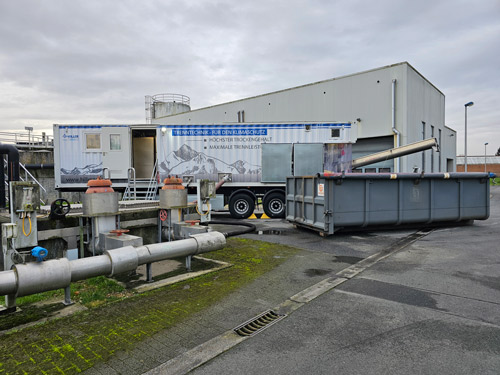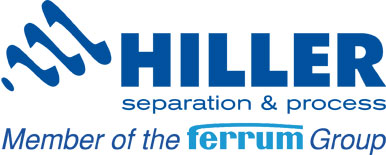The German company Hiller will soon be installing two new decanters at Aquafin's sewage treatment plants in Ninove and Waregem, Belgium. Operating costs were a decisive factor in the award of the contracts. "Today, this method of tendering is still somewhat unusual," notes Gert Snijders, Area Sales Manager at Hiller, "but in essence it should happen more often. After all, the potential operational gains are much greater than the differences in purchase price."
In 2024, Aquafin issued a tender for new decanters at the Ninove and Waregem sewage treatment plants. In Ninove, the two existing machines had reached the end of their service life; in Waregem, there was a need for additional capacity. Hiller proposed the DecaPress DP574 for both sites, a centrifuge with high dewatering efficiency and a capacity of 500 kg of dry matter per hour. At peak capacity, it can even process up to 800 kg of dry matter per hour.
A range of operating costs
It is noteworthy that it was not the purchase price, but the operating costs that were the key assessment criterion for awarding the project. A good thing, says Snijders. "There is a growing awareness that the purchase price represents only a very small part of the total investment. In addition, you also pay for energy consumption, maintenance, auxiliary material consumption and final sludge processing. If you take into account an average lifespan of 20 years, you can see that these operational costs account for a much larger share of the total than the purchase itself. But then you also need to be able and willing to take an overall view. After all, in many companies, these budgets are still separate." According to Snijders, the most decisive factors in the total cost picture are the disposal and processing costs for the sludge. "These quickly represent more than 60% of all costs. The more you can save on this – particularly by achieving a higher dry matter content – the greater the impact on operating costs will be. In addition, a higher dry matter content also means less incineration and, consequently, lower CO2 emissions."
Validated performance
For Hiller, which designs installations with a focus on maintenance and performance, it was important to demonstrate that the DP574 could truly deliver on its promises regarding, among other things, consumption and output. Before the contracts were awarded in both Ninove and Waregem, a container unit was installed for a week of testing. In Waregem, these tests achieved a dry solids content of 30%; in Ninove, Hiller even reached a dry solids content of 36%. “Such results are rather exceptional for a wastewater treatment plant,” says Snijders. “In Ninove, the high dry solids content is partly due to the high sand content in the sludge, although sand naturally also causes wear. That is precisely why we will equip this unit with additional protective components. In this way, we simultaneously reduce maintenance, extend service life and thus ensure the lowest possible operating costs.”
Author: Elise Noyez, Aquarama
Read the article in Dutch here.

Trial unit in Ninove, Belgium, 2025

Trial unit in Waregem, Belgium, 2025












